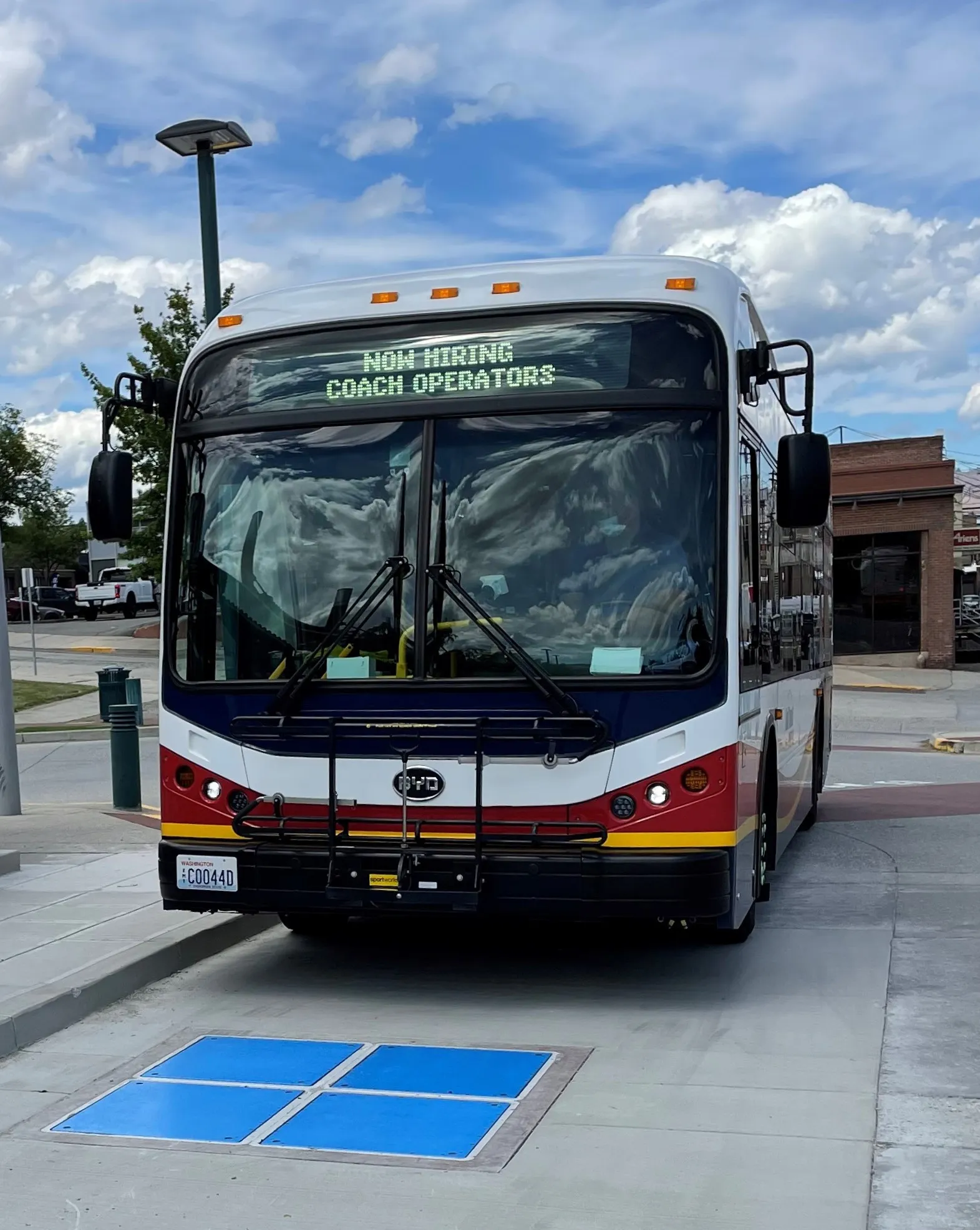To those who don’t know how it works, using wireless chargers to recharge electric transit buses “appears to be a little bit like black magic,” said John Rizzo, chief technology and strategy officer for InductEV. Based on his work with the wireless electric vehicle charging supplier, he admits the technology’s novelty has made some transit agencies hesitant to adopt it.
Often, transit agencies charge their buses nightly with wired chargers when the vehicles return for cleaning and maintenance. But charging all those buses at the same time overnight puts a high demand on the local power grid.
Wireless charging along bus routes, however, can be more efficient and cost-effective than depot charging, Rizzo said. Daytime charging also allows transit agencies to take advantage of renewable energy, like solar, that is produced when the sun is up.
Other on-route charging systems employ overhead chargers at bus stops to supplement depot charging. These chargers typically need high-power, fast-charging infrastructure, Rizzo said, and they can be more expensive and require more land than wireless chargers. He said there have also been cases where the bus drove away from the overhead charger with the pantograph still attached, damaging the infrastructure.
How wireless charging works
The basic technology of wireless charging for buses is just like that available for many cell phones and inductive cooktops, Rizzo explained — just at a larger scale.

When a wireless charging-equipped bus stops over charging pads placed in the roadway, it connects via an inductive magnetic resonance system, Rizzo said. “Because we’re charging deterministically, and we know where the next charge location is, we can keep the state of charge in a narrow range between 50% and 70%,” he said. That extends the life of the bus batteries, he added.
Drivers need some training to learn how to use the technology, but a digital display in the bus helps the operator align the vehicle with the pads. “When the driver puts the vehicle in park, power flows from the pad through the magnetic field into the bus,” Rizzo said. The road pads and on-vehicle receiver also communicate data about the charging event, battery temperature and potential maintenance issues. Rain, snow or ice do not impede the charging system, Rizzo said.
InductEV partners with hardware manufacturer Detroit Manufacturing Systems and with other mechanical and electrical engineering companies to enable one-stop shopping for wireless charging-equipped battery-powered buses. “Our engineers will work with the vehicle makers’ engineers to design-in the charging system,” Rizzo said. “Once the design is complete, we’ll certify the design and then the end customer can simply purchase the vehicle from the vehicle maker.”
Who’s using wireless charging?
The development of this technology comes amid a growing need for transit bus chargers. With strong funding support from the Federal Transit Administration, U.S. transit agencies in 2023 had over 6,100 zero-emission buses on the road, delivered, on order or funded, according to data from Calstart, a national clean transportation advocacy group. The majority of those — 5,775 — are battery-electric vehicles, with the remainder powered by fuel cells. Battery-electric buses must be regularly charged to stay on the road.
Several transit agencies have taken the leap and adopted the technology. Link Transit in Wenatchee, Washington, started wireless charging with one bus in 2017 and now has 23 vehicles on the road, served by four chargers. Collectively, these vehicles have traveled 5.5 million miles, according to InductEV. Five more transit agencies in Washington state currently deploy buses equipped with InductEV’s wireless charging system, and the Central Puget Sound Regional Transit Authority, known as Sound Transit, will join them soon, per a Feb. 20 press release.
IndyGo, the transit agency serving the Indianapolis region, started fleet electrification with 20 buses using wired chargers, Rizzo said. But on a typical day, only 14 buses were available because of charging failures overnight. “So they converted those 14 buses to wireless chargers,” he said. Instead of needing 20 chargers in the depot, IndyGo then needed only six on-route chargers, saving costs. “When the buses leave the depot in the morning to go on their routes, they return to the depot at night with the same amount of charge, if not more, than [when] they left,” Rizzo said.
Martha’s Vineyard Transit in Massachusetts also operates buses equipped for wireless charging.




















